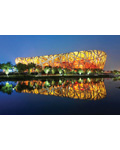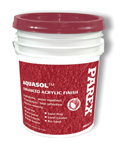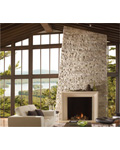Manufactured Techniques for Architectural Colors and Textures
Learning Objectives:
- Describe trends in the application of color and texture to typical architectural materials, surfaces, and finishes.
- List methods for applying color and texture to such surfaces as laminates and glass.
- Discuss the general effects of color and texture on architecture in both aesthetic and functional terms.
- Apply trends in end-user needs, building uses, and color/texture selection to building design situations.
Credits:
In the 1999 book 30, architect Rem Koolhaas wrote, “Maybe color could make a comeback,” suggesting that it passed away in the 1990s. For its return, color would “no longer be just a thin layer of change, but something that genuinely alters perception.”
Building on this idea, this continuing education course examines three sets of manufacturing technologies that—over the last several decades—have significantly expanded the modern palette for building design, indoors and out.
As leading architectural practitioners have explained, the essential considerations for material and surface articulation remain constant regardless of the technology employed. Architectural solutions, light quality, and the integral nature of materiality and visual expression result directly from the building's objectives. In its own ways, the structural solutions lead to many choices of color and texture; programmatic needs also imply appropriate colors and textures.
In this way, Koolhaas contended, “There are two kinds of colors. The ones that are integral to a material, or a substance—they cannot be changed—and the ones that are artificial, that can be applied and that transform the appearance of things. The difference between color and paint. After an initial outburst of the use of paint at the beginning of the century—was it the easiest way to transform, to get rid of history?—at the end of the 20th century, we are committed to the authenticity of materials even more, to materials that announce their own dematerialization.”
Because of their integral nature and direct links to building materials and methods, color and texture should reveal themselves in the early studies and sketches that comprise the conceptualization of the building project, says Daniel Kelley, FAIA, senior partner with MGA Partners Architects, Philadelphia. “Craft is an essential element of architectural process, connecting the hand drawing using the pencil and other tools as a craft-related activity that extends to the craft of actually making a building,” says Kelley. He sees this as reinforcing “the meaning and value of architectural drawings,” especially those made by hand.
To get his firm's project designs started, Sven Shockey, AIA, LEED AP, design principal in the Workplace Studio at SmithGroupJJR's Washington, D.C. office, says, “We initially try to get a sense about what the client might need in their space. Some clients want a pure, simple environment while others are looking for warmth and texture.”
Talking to the building's ultimate occupants or end users can be very valuable, Shockey adds, because often the tenants, students, patients or visitors are looking for something that the project developers or owners may not be expecting. “But then we look for a parti or metaphor for the project that can guide decisions throughout the project from overall form to the materials themselves,” he says, ultimately resulting in answers to the question: Which colors and textures are best for this situation?
 |
For the University of Southern California’s School of Cinematic Arts, architect Urban Design Group used precast accent stones and ornamental Venetian plasters hand-troweled over gunned concrete in shades of terra cotta, off-white, and muted goldenrod. Photo courtesy of Parex USA |
Notice

www.laminart.com

www.parex.com

www.eldoradostone.com









